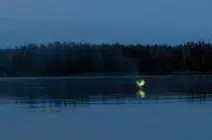The etymological origin of the term fatuous is found in Latin. And it comes from a word in that language: the adjective “fatuus”, which can be translated as “fool”, “fool” or even “extravagant”.
According to the dictionary of the Royal Spanish Academy ( RAE ), this concept allows you to qualify that which is pretentious or that has an unfounded boast .
 For example: “This supposed artist is nothing more than a fatuous invention of a record company that needs to make a new youth idol,” “The president's fatuous speech only moved his most fanatical followers; For the rest of the population, they were nothing more than meaningless words,” “The club coach is a fatuous fool who knows nothing about football.”
For example: “This supposed artist is nothing more than a fatuous invention of a record company that needs to make a new youth idol,” “The president's fatuous speech only moved his most fanatical followers; For the rest of the population, they were nothing more than meaningless words,” “The club coach is a fatuous fool who knows nothing about football.”
The notion of will-o'-the-wisp , on the other hand, refers to a flame that appears at a certain distance from the ground when certain materials emanating from animals or plants in the process of putrefaction catch fire .
Although there is no definitive scientific explanation, it is believed that will-o'-the-wisp arises from the oxidation of methane and phosphane produced when organic matter decomposes. This would cause lights to appear that advance through the air and that can be seen in cemeteries and swamps at night. Other theories refer to the phosphorescence of calcium salts that are in the bones and bioluminescent organisms.
Beyond science , popular mythology attributes will-o'-the-wisps to spirits and other supernatural entities. According to belief, if a person wants to get closer, the will-o'-the-wisp moves away.
Specifically, we can establish that in different places in Europe it is considered that will-o'-the-wisps are the evil spirits of certain deceased people. However, in others it is indicated that they are the spirits of children who have died without receiving the sacrament of baptism and who wander between heaven and hell.
By extension, something illusory is called a will-o'-the-wisp: “The unity of the social movement is nothing more than a will-o'-the-wisp,” “Specialists believe that the possibility of agreement constitutes a will-o'-the-wisp.”
Such is the mystery that exists around will-o'-the-wisps that we cannot ignore the fact that they have become protagonists or an important part of numerous cultural works. Thus, for example, in the field of literature they appear in such significant novels as “The Lord of the Rings” (1954), by JRR Tolkien; in “The Neverending Story” (1979) by Michael Ende; in “It” (1986) by Stephen King or in “Dracula” (1897) by Bram Stoker.
Precisely in that last book, the aforementioned wildfires appear on the road that Jonathan takes in a horse-drawn carriage to Count Dracula's castle.
They are also present in the world of music. A good example of this is that the composer Manuel de Falla shaped “Song of the Wisp” to include it in the ballet “El amor brujo” (1915).
